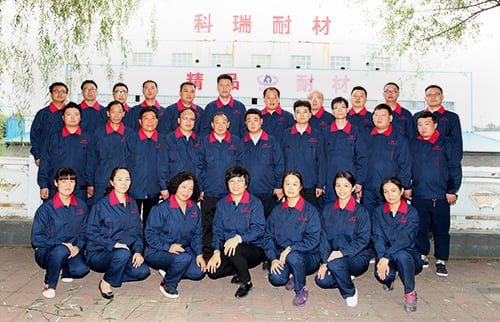
We are a refractory material manufacturer, with four major factories: heavy brick factory, light brick factory, monolithic refractory factory and fused-cast brick factory.
We promise to provide you with high-quality refractory materials.
Ladle use
Ladle is a container for storing and transporting molten steel. At present, the off-road refining process of fresh water is mostly completed in ladle, so ladle plays an important role in steelmaking system.
Working environment of ladle: When steel is produced, the temperature of molten steel is about 1650℃. The ladle is inclined into the ladle from the furnace. The ladle is not only subjected to strong thermal impact and mechanical impact of molten steel, but also subjected to a small amount of molten slag and chemical erosion of molten steel. Especially the damage to the bottom of the bag.
Monolithic refractory for ladle lining:
Ladle lining does not contain carbon to adapt to a wider character, will work on the lining after cleaning residue can continue to pour. Although the castable cost is greater than that of magnesia-carbon brick, the comprehensive cost is lower than that of magnesia-carbon brick because it can be poured repeatedly (generally about 6 times). At the same time, the spraying effect of slag line is very good. Castable to bauxite, corundum raw materials, supplemented by part of magnesia.
Magnesia carbon brick is mainly used in slag line position, its aggregate generally uses electrofused 97, 98 ordinary fused magnesia or large crystalline magnesia, carbon (graphite) mass fraction is generally 10%~12%, in addition, there is a certain amount of antioxidants. Magnesia-carbon brick perfectly combines the excellent high temperature performance of magnesia material with the excellent permeability and thermal shock stability of carbon material against high temperature slag.
Aluminum-magnesia carbon brick is made of bauxite or corundum as the main raw material, supplemented by an appropriate amount of fused magnesia, graphite and bonding agent, by press forming and low temperature hardening treatment. Compared with high alumina brick, the performance of aluminum-magnesia carbon brick is improved by adding a small amount of magnesia to improve the slag resistance of the brick; Adding a small amount of graphite improves the slag wettability and reduces the possibility of slime.
At the same time, alumina and magnesia in aluminum-magnesia carbon brick can generate magnesia-alumina spinel with high refractoriness at high temperature, which improves the high temperature stability of the brick. Therefore, aluminum-magnesium-carbon brick has higher thermal shock stability and slag resistance than high aluminum-carbon brick.


 Wechat Us
Wechat Us